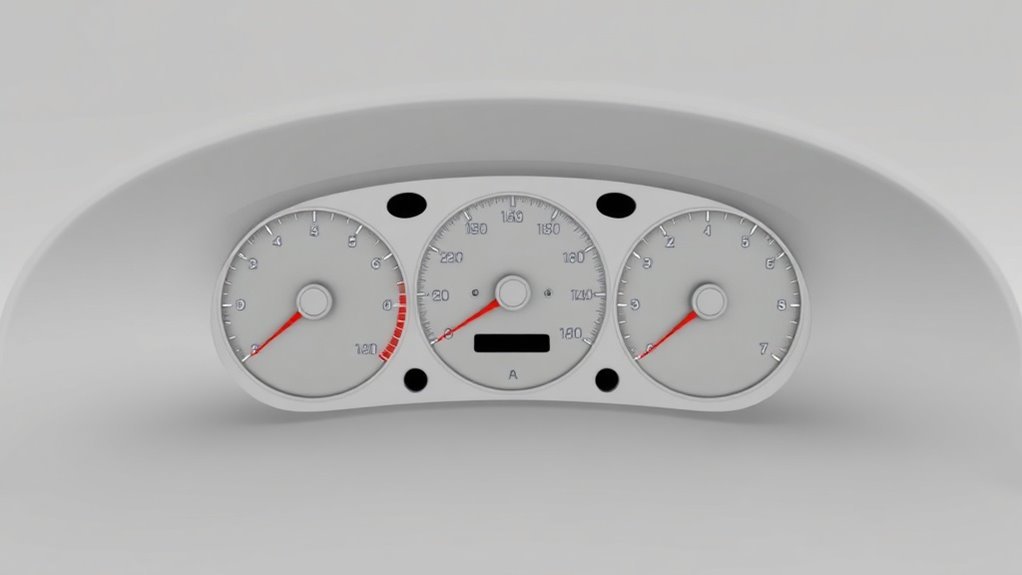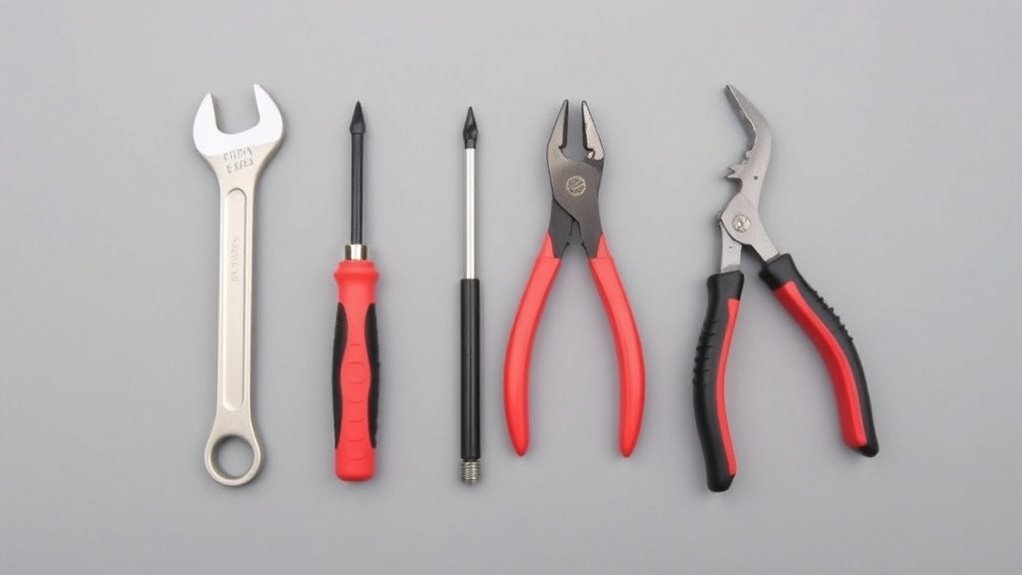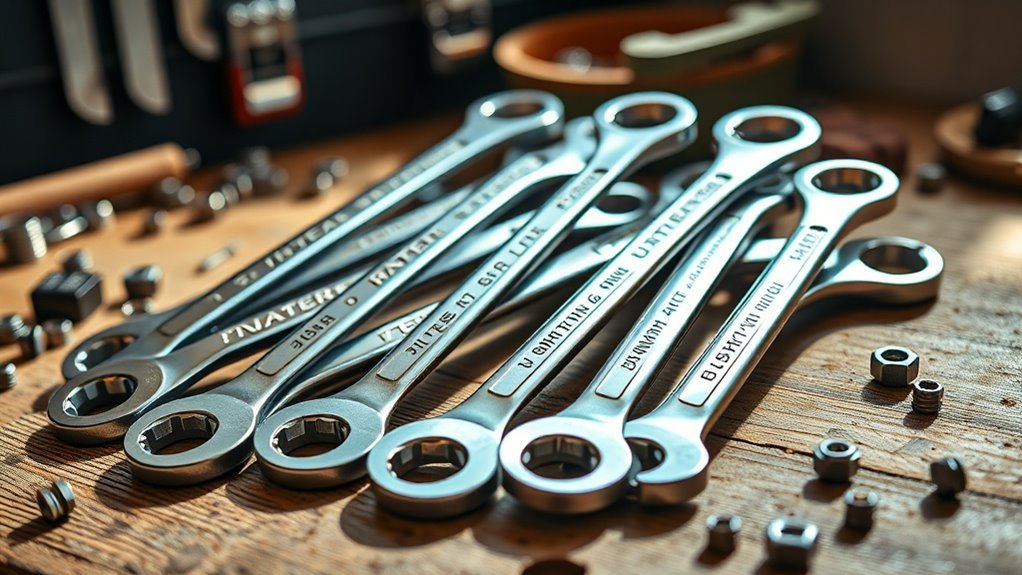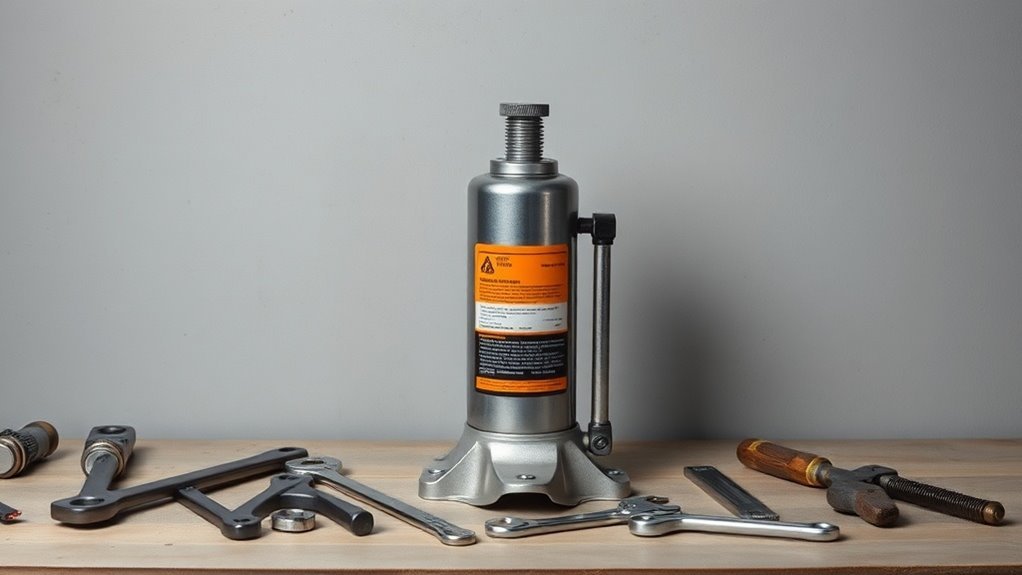Understanding RPM, Torque, and Speed Settings

Understanding RPM, torque, and speed settings is key to boosting your vehicle’s performance. RPM, or revolutions per minute, plays a vital role in engine speed and power. Torque affects acceleration and towing capabilities. The right speed settings help optimize efficiency based on your specific needs. Balancing these elements can enhance performance and fuel economy. If you explore further, you’ll discover practical tips to adjust and measure these aspects effectively for your vehicle.
Key Takeaways
- RPM measures the engine’s crankshaft rotations, crucial for measuring performance and fuel efficiency in vehicles.
- Torque represents the engine’s twisting force, affecting acceleration, towing capacity, and overall driveability.
- The balance between RPM and torque influences power output and the effectiveness of the power band.
- Adjusting speed settings based on specific tasks optimizes vehicle performance and improves efficiency.
- Regular maintenance and understanding driving habits significantly impact RPM and torque efficiency, enhancing overall vehicle health.
What Is RPM and Why Is It Important?
RPM, or revolutions per minute, is an important metric in understanding how efficiently an engine or motor operates. It measures how many times the crankshaft makes a full rotation each minute, providing insight into the engine’s performance.
Higher RPMs usually indicate more power and speed, but they can also lead to increased wear and tear. Monitoring RPM helps you enhance your vehicle’s performance and fuel economy.
If you push the engine too hard, especially beyond its peak RPM range, you might reduce its lifespan. Understanding RPM is vital for maintaining the balance between power and efficiency, ensuring that you get the best out of your engine while minimizing the risk of damage.
The Role of Torque in Engine Performance

While understanding RPM is essential for engine efficiency, torque is equally important for performance. Torque represents the engine’s twisting force, critical for how well your vehicle accelerates and climbs.
Torque is key to performance, providing the essential force for acceleration and climbing efficiency in your vehicle.
It affects the responsiveness of your car and plays a role in towing capacity, making it an important factor in various driving conditions. Higher torque often translates to better performance, especially in demanding situations.
- Acceleration: More torque means quicker starts and faster acceleration.
- Towing Capacity: Necessary for moving heavier loads without straining the engine.
- Driveability: A vehicle with ample torque feels powerful and controllable.
- Engine Longevity: Proper torque levels can lead to a healthier engine, preventing undue wear.
Understanding torque can markedly improve your driving experience.
Understanding Speed Settings and Their Impact
Understanding speed settings is essential for maximizing your engine’s performance.
When you adjust RPM, you’re directly influencing the speed at which your vehicle operates, which can enhance efficiency for specific tasks.
Knowing the right speed for different situations helps you maintain control and achieve the best results. Additionally, understanding energy consumption differences can aid in selecting the most suitable tools for your projects.
RPM and Speed Correlation
When you’re looking at the relationship between RPM and speed, it’s vital to recognize how these elements interact within a system. RPM (revolutions per minute) directly influences the speed of a device or vehicle. As you increase RPM, speed typically increases, but this isn’t a straightforward equation.
Here are some factors to take into account:
- Gear Ratios: Different gear settings can change how RPM translates into speed.
- Load Conditions: Heavier loads may require more RPM to achieve the same speed.
- Friction: Increased friction can limit the efficiency of speed increase from higher RPMs.
- Motor Type: Electromechanical systems may respond differently to RPM adjustments compared to purely mechanical systems.
Understanding these factors will help you make informed decisions regarding speed settings.
Optimal Speed for Tasks
Ideal speed settings play an essential role in maximizing efficiency and achieving desired outcomes for specific tasks. When you use the right speed, it not only enhances performance but also boosts your confidence in your work. Different tasks require distinct speeds, and knowing these can be the difference between success and frustration.
Here’s a quick reference table to illustrate:
| Task Type | Recommended Speed | Impact on Outcome |
|---|---|---|
| Fine Detailing | Low | Precision increases |
| Heavy Cutting | High | Efficiency maximized |
| Sanding | Medium | Smooth finish achieved |
| Polishing | Low | High gloss results |
| Drilling | Variable | Ideal penetration |
Speed Adjustments and Control
Adjusting speed settings can considerably enhance your control over various tasks, ensuring you achieve the best results.
Whether you’re using a power tool or a kitchen appliance, the right speed can make all the difference.
Here’s why fine-tuning speed is essential:
- Precision: Slower speeds are ideal for detailed work, minimizing errors.
- Efficiency: Higher speeds can speed up processes when task accuracy isn’t critical.
- Safety: Adjusting speed settings can help prevent accidents and equipment damage.
- Flexibility: Different tasks require different speeds; adapting to that can improve overall performance.
The Relationship Between RPM, Torque, and Speed
When you’re working with machinery, understanding how RPM affects torque and speed is essential.
Higher RPM can lead to increased power output, but it also changes the torque characteristics. You’ll want to find the right balance to optimize performance for your specific needs.
RPM Influence on Torque
As you explore the nuances of RPM, it’s essential to understand how it influences torque and speed settings. The relationship between RPM and torque is crucial for enhancing your machinery’s performance. Higher RPM often leads to increased torque, but only to a certain point. Beyond that, you might find diminished returns.
- Torque output is influenced by the engine’s design and gear ratios.
- The power band is where peak torque and RPM work together.
- Different applications require distinct torque levels at specific RPMs.
- Understanding this relationship helps in tuning for efficiency and longevity.
Speed and Power Output
Understanding how speed and power output are interconnected with RPM and torque is vital for optimizing machinery performance. Fundamentally, power output depends on both torque and speed; the higher the RPM, the more power can be delivered, given adequate torque.
When you increase RPM without sufficient torque, you may risk overspeeding and causing damage. Conversely, high torque at low RPM can provide substantial power for heavy loads, but it may reduce overall speed.
Measuring and Adjusting RPM and Torque
Measuring and adjusting RPM and torque is essential for optimizing performance in various applications.
To achieve the best results, you need to use the right tools and techniques.
- Use a tachometer to measure RPM accurately.
- Employ a torque wrench to guarantee the correct torque settings.
- Monitor engine or motor performance during adjustments to identify any issues.
- Regularly calibrate equipment to maintain accuracy. Additionally, leveraging tools such as multimeters can enhance your ability to diagnose electrical issues related to RPM and torque adjustments.
Common Applications of RPM and Torque in Different Vehicles
RPM and torque play essential roles in the performance of various vehicles, influencing everything from acceleration to fuel efficiency.
In passenger cars, higher RPMs enable swift acceleration, especially during overtaking maneuvers. Meanwhile, torque helps vehicles haul heavy loads, making it critical for trucks and SUVs.
Higher RPMs enhance acceleration in passenger cars, while torque is vital for trucks and SUVs to manage heavy loads.
In motorcycles, both RPM and torque impact handling and speed, allowing for agile maneuvering in tight spaces.
Performance sports cars rely on high RPMs for peak power output, while electric vehicles focus on torque for instantaneous acceleration.
Bicycles also utilize the concepts of RPM and torque, especially in gear selection, affecting how efficiently you can pedal uphill or accelerate.
Understanding these applications can help you appreciate your vehicle’s capabilities more fully.
Tips for Optimizing RPM and Torque for Efficiency
While achieving ideal efficiency may seem intimidating, there are simple ways to fine-tune your vehicle’s RPM and torque settings.
Start by paying attention to your driving habits; smoother acceleration can substantially enhance fuel efficiency. Additionally, maintaining your vehicle regularly, such as ensuring proper tire pressure and timely oil changes, can support optimal performance. Proper tire pressure is crucial as under-inflated tires can lead to poor fuel efficiency, reduced handling, and increased wear on your vehicle.
- Shift gears at the right RPM to avoid laboring the engine.
- Limit excessive idling to save fuel and reduce emissions.
- Use cruise control on highways to maintain steady speeds.
- Avoid overloading your vehicle, as this increases the demand for torque and fuel.
Questions
How Does Altitude Affect RPM and Torque Performance?
Altitude affects RPM and torque performance because thinner air decreases engine efficiency. You might notice reduced power output at higher elevations, making it essential to adjust your vehicle settings for peak performance in those conditions.
Can I Measure RPM and Torque Without Specialized Tools?
You can’t accurately measure RPM and torque without specialized tools. However, some methods, like smartphone apps or DIY setups, can give you rough estimates. Just remember, these won’t be as precise as professional equipment.
What Engine Types Benefit Most From High RPM Settings?
While you might think only racing engines benefit from high RPM settings, many performance and sports car engines thrive at elevated speeds, maximizing power output and responsiveness, making driving more exhilarating and engaging for you.
How Does Tire Pressure Impact Torque Delivery?
Tire pressure considerably affects torque delivery. If tires are under-inflated, they’re prone to increased rolling resistance, which can hinder torque transfer to the road. Proper pressure guarantees ideal grip, allowing your vehicle to utilize its torque effectively.
Are There Specific RPM Ranges for Fuel Efficiency?
For fuel efficiency, focusing on fantastic, fuel-friendly RPM ranges—typically between 1,500 to 2,500 RPM—can help you maximize milage. Staying in this sweet spot tends to promote better performance while saving precious resources.
Conclusion
So, next time you’re revving your engine, just remember: RPM and torque are like that couple at a dinner party—one’s all about speed while the other’s focused on the heavy lifting. If you think you can just ignore them and still get your vehicle to perform like a race car, good luck with that! Just remember, a little balance goes a long way. After all, nobody wants to be the laughingstock of the highway, right?






